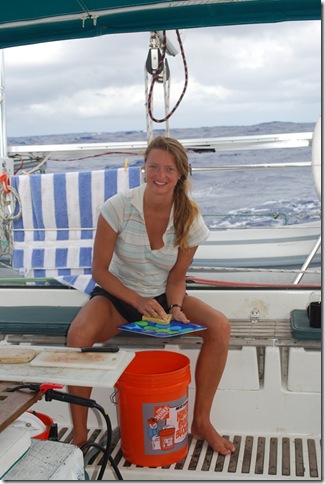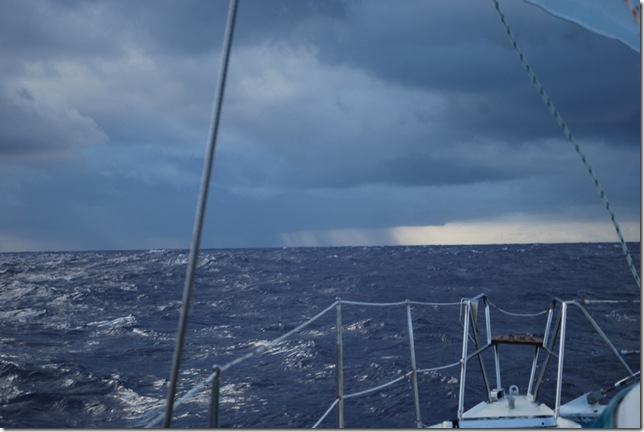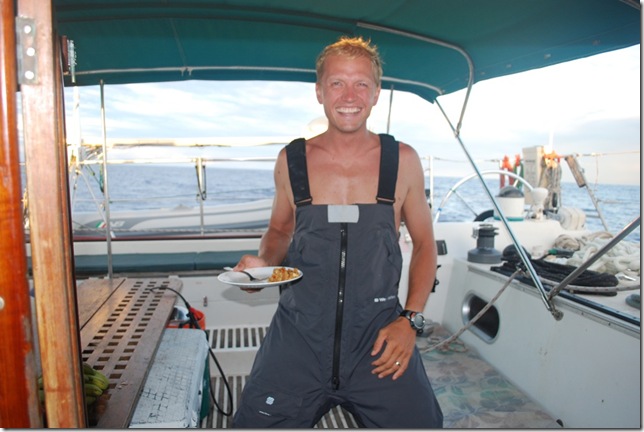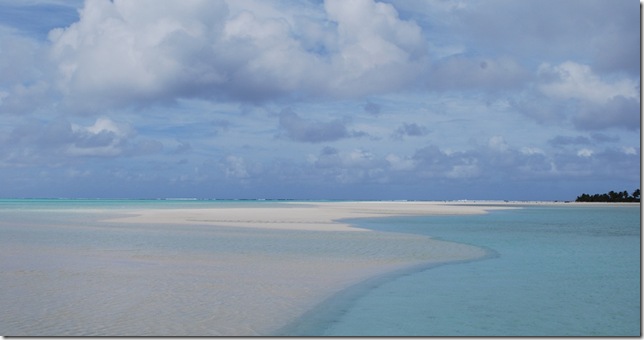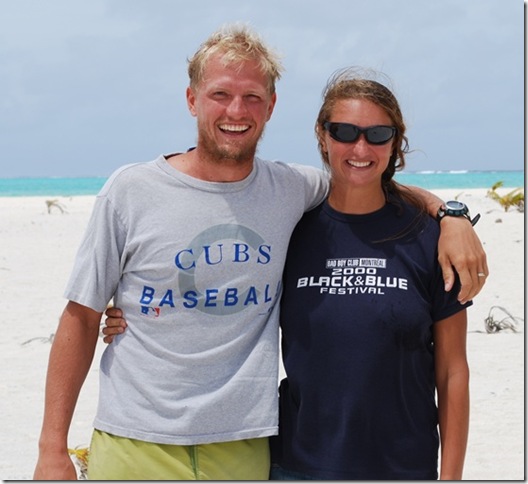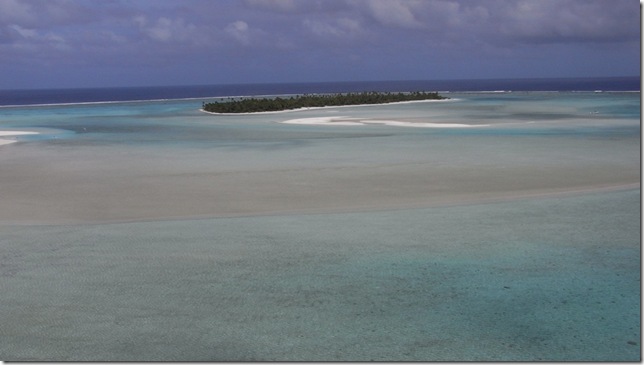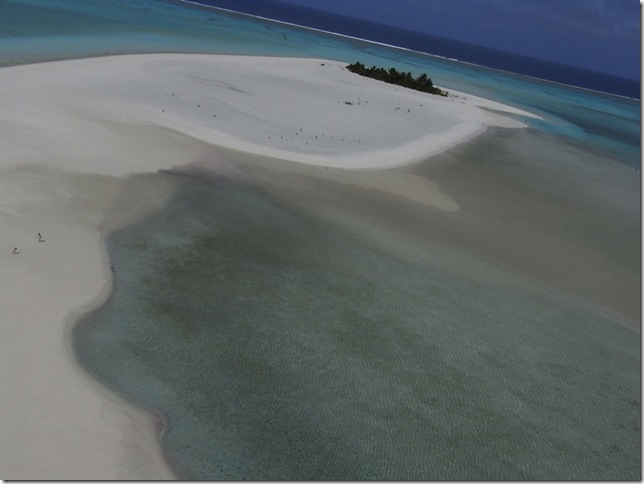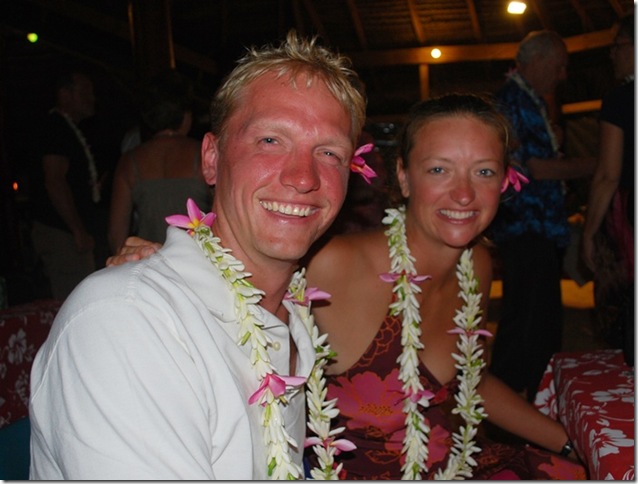Lat: 19 37.938
Long: 167 10.601
We are still plodding along out here. The winds have been really light for the last couple of days, so we aren’t making very good time, but we should arrive at Beveridge Reef tomorrow. In the meantime, I have been trying to develop my seawomanship by reading Chapman’s "Piloting and Seamanship" (highly recommended) and applying it during my watches. It’s pretty gratifying to trim the sails so that they are balanced and watch our speed increase as a result.
Dallas and I just happened to turn on the short wave radio for the first time on this passage and heard about the tsunami that struck Samoa (and to a lesser extent, Tonga) yesterday. It sounds like warning came much too late (30 minutes AFTER the tsunami struck land), so in addition to destruction of several resorts along the southern coastline of Samoa, there were many casualties. Needless to say, we are thankful that we aren’t in that area and concerned about other cruisers who might be.
FYI, the sea is actually the safest place to be in the event of a tsumani. We probably wouldn’t even notice it, as the wave wouldn’t begin to break until close to shore. We hope this is comforting and will keep you posted on our status and that of our friends.
Lat: 19 00.116′ S
Lon: 163 44.269′ W
After spending a night making sure we didn’t sail into squalls with lightning, we awoke to an incredibly beautiful day — clear skies, cool winds, and long, slow swells. Even with our grounding precautions, sailing a 50-ft metal mast into lightning isn’t on our list of things to do. Luckily we never got close enough to hear thunder and we didn’t have to change course to avoid the squalls. Even after motoring for three hours in the morning, we only managed 50 miles our second day out. The problem has been winds with a westerly component that are coming from where we’re trying to sail to. The best we’ve been able to do is sailing 15-20 degrees north of the rhumb line. Right now, we’re having trouble sailing closer than 45 degrees to the rhumb line. That gets a bit frustrating in terms of progress, but we’re slowly getting there and the days are gorgeous.
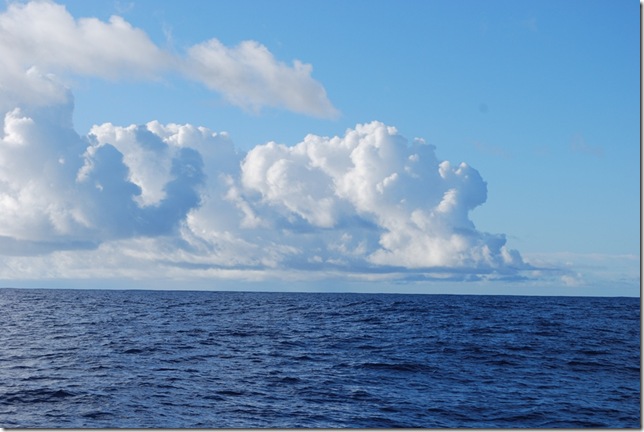 Beautiful days with calm seas and cool breezes
Beautiful days with calm seas and cool breezes
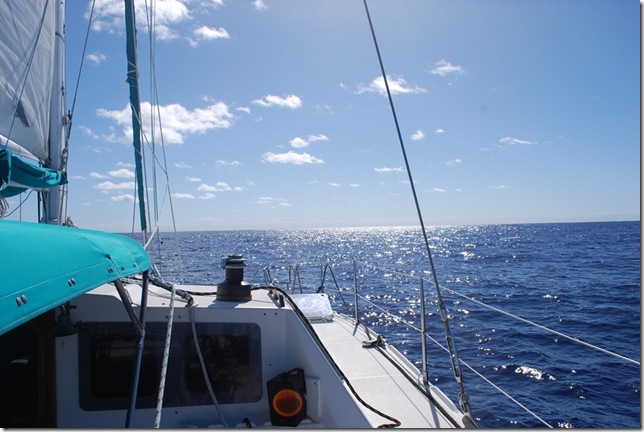 Sunny skies and the ocean is like a big lake
Sunny skies and the ocean is like a big lake
We can definitely tell we’re getting farther south. The nights are feeling chilly and we’re covering up to stay warm. The thermometer says it’s only in the low 70’s, so I imagine we’re going to be freezing when we start heading south to New Zealand.
The water here is about 3 miles deep and a very pretty shade of blue, but we haven’t seen much in the way of marine life on this passage aside from a couple of birds.
We spent much of yesterday reading about New Zealand and trying to decide whether to settle in one place for the season and explore by car or stay mobile and move the boat more frequently. Either way, it looks like we’re going to enjoy our stay.
Lat: 19 03.522′ S
Lon: 161 44.104′ W
The first night out after a long stay near land can often be a little rough. We’re generally still getting used to the motion, and watches in the middle of the night are difficult after getting used to sleeping all night. The seas on this passage haven’t been bad, and we all pretty much have our sea legs again.
We did much better our first day than we anticipated — right around 100 miles. The wind did start out light, but then we ran into several squalls. Luckily, we were able to stay dry for the most part, sailing along the edge without leaving the rhumb line. With the full main and jib up, we were doing over 7 knots. Once we passed through the squalls, right before sunset, the light winds returned, and this morning we put the spinnaker up since the winds were light from the port quarter or astern.
By mid-afternoon, we could see another line of rain ahead, and right when we were in the middle of a project. Tomatoes were plentiful and cheap in Aitutaki ($3 NZ for a big bag), and we also have green pepper and onion, so we decided to try our hand at chips and salsa. For chips, we made our typical flour tortillas and cut them into small pieces. Since we don’t have jalapenos, we added some hot sauce and let the green peppers fool us. It was tasty, and made things a bit more cheery when we had to drop the spinnaker and put the jib up for the rain squall. There’s a rough damaged piece of stainless on the starboard bow pulpit that’s been there since we owned the boat, and when the winds changed near the squall, the large spinnaker caught on it and ripped the bottom panel. Hopefully the damage will be contained to just that panel if we fly it again. Unfortunately, the wind clocked around to the WNW in the large squall, so the best we could do was sail south then northwest for a couple of hours, but we’ve just reached the other side of the rainy patch and it’s beautiful, with long, slow swells.
When we were tacking to the northwest, we were on a course for Palmerston, only about 150 miles away. It was originally our our list of places to stop because it’s such an interesting story. In the 1850’s, an Englishman settled there with three wives, all of whom were from the northern Cook Island of Penhryn. The atoll was uninhabited before his arrival, and today, all the inhabitants of the island are his descendants. At some point the atoll was ceded to him by the British crown, and the original papers are still on the island. He set up “strict” rules for intermarriage, housed each of the three wives in a different part of the atoll, and worked hard to provide plenty of first-cousin dating options. Today they still speak an old English dialect, but a bit of a family feud has developed that extends to the “rights” to cruisers. In Palmerston you’re essentially adopted by a family on arrival. They pick you up from your boat in the morning and you spend the day doing a variety of projects, activities, and trading with them. The generally unspoken rules are that you’re not allowed to bring your dinghy ashore, move about the atoll as you please, or above all, mingle with a different part of the family. With supply ships being fairly infrequent, the small mooring fees and opportunities to trade with the cruisers are apparently a prize that the different factions of the family fight over, going as far as to race each other out to an approaching boat in order to be the group to claim it. As charming as being adopted and sharing activities with such unique hosts would be, we opted instead for snorkeling and diving Beveridge Reef.
We’re finally leaving Aitutaki today after a very enjoyable stay. We completed preparations yesterday. There’s a large rain water cistern not too far from the boat, so I lugged 84 gallons of water 12 gallons at a time while Lauren transferred the water into the tanks. We haven’t filled the tanks for a couple of weeks and have done a fair amount of laundry in that time, so we’re still doing OK on water usage. We’ve been doing laundry by hand since we left the Galapagos and are getting used to it, but we’re looking forward to the possibility of a reasonably priced laundromat in New Zealand.
This is the first place we’ve been where it’s technically prohibited to bring trash ashore, but we did it anyway, as most of it was stuff from Aitutaki, and all the other cruisers were using the trash barrels in the port area.
When we checked out, we found out that departure tax is $55 NZ per person, so the total cost for all of the formalities has come out to $345 NZ (about $240 US), which is more than we’d anticipated, but without the large amount of French funding present in French Polynesia, it is understandable. In general, the people seem to be about as well off here as they are in French Polynesia, even without the subsidies. One of the noticeable differences is that people drive a lot of scooters instead of the new 4×4 trucks that were everywhere in French Polynesia. We’ve also noticed a lot more gardening or farming on both a small and medium scale.
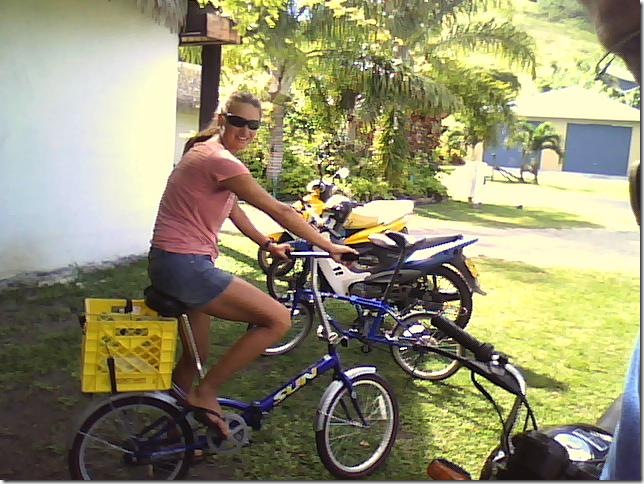 Our “nice push-bikes” as the locals call them alongside the local conveyance
Our “nice push-bikes” as the locals call them alongside the local conveyance
I also had a chance to get my ear checked out again, this time by a very busy Chinese doctor in the local hospital at the top of the hill. He confirmed that I do have some hearing loss in the left ear but said that the inflammation was gone and it looked perfectly healthy. He suspected a blockage somewhere that should take care of itself eventually. Total cost — $0, free. That was nice. He was also the one person we’ve met on the island who didn’t have a thick Kiwi accent. Cook Islands Maori is clearly the first language of the natives, but they also speak English with a thick Kiwi accent. It’s still a bit strange, but we’ll be getting used to it. As they enjoy New Zealand citizenship, there are at least as many Cook Islanders in New Zealand as there are in the Cook Islands themselves.
The outboard propeller is still a problem. The rubber bushing that’s designed to break if you hit something is broken on the propeller we left with, and the old prop that was on the boat makes a bad slipping sound in anything that’s much above idle, so we’re left with idle speed only for a while. Hopefully that will get us by until we can remedy the situation in Tonga or New Zealand. The boat repair list is gradually getting longer as the days go by. Yesterday I was telling Silvio from Matajusi that on our 20 year old boat, something breaks every other day though most of the time it’s not serious. He just laughed. He has a virtually new boat and said that something breaks twice a day. Repairs and keeping the boat running really are a big part of the challenge of long-distance cruising. We both agreed that with the expense and difficulty of making repairs out here, instead of performance, the sailing philosophy of cruising is centered around not breaking or wearing anything out.
The upcoming passage looks like it’s not going to be our favorite. The first half is going to have very light winds (less than 10 knots), so we’ll be inching along or motoring. One of the boats that left yesterday was visible for so long that they couldn’t have been doing more than 2 knots. We should get some more wind on the second half of the passage, but the seas will be big again. We’re well into the South Pacific Convergence Zone (SPCZ), which is an area in the western Pacific where the typical tradewinds weather gives way to less predictable weather that can include light winds as well as strong winds from atypical directions. Light winds are better than strong winds from the west, so we’re actually not unlucky.
We’ve decided to skip Palmerston and head for Beveridge Reef. Palmerston is an interesting story, so we’ll try to tell it briefly in a blog during the passage, but Beveridge Reef is less of a detour and promises some incredible snorkeling and diving. It’s just a reef in the middle of the ocean — no land or people. It’s in an oval shape and has a pass with good anchoring inside, and we’ve heard the coral is amazing. The conditions should be good when we get there, so we’re hoping for a memorable stop.
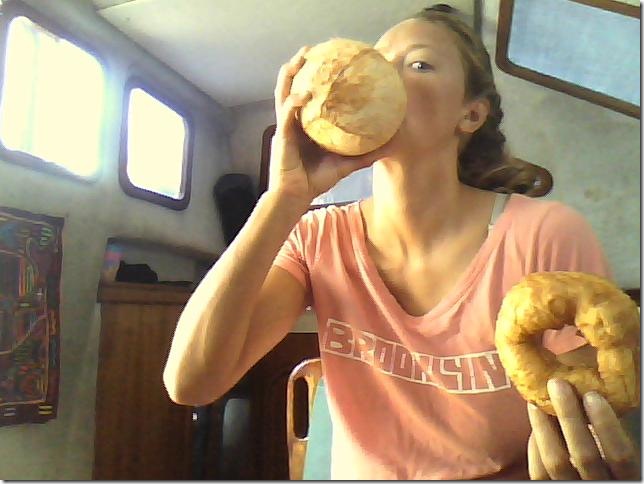 Last breakfast in Aitutaki: Local no-icing donut and coconut water
Last breakfast in Aitutaki: Local no-icing donut and coconut water
After getting some boat items taken care of on Monday (filling propane tanks, making new hatch pieces with Martin from S/V Anima, replacing some rusted bolts on the engine instrument panel, etc.), we ended the day with another mostly Beatles song session on Anima that lasted until past midnight. Martin is an incredible guitar player (a.k.a. The Human Jukebox), and Wolfgang, who joined him as crew in Bora Bora, never tires of singing. Lauren not only loves to sing, but has a great voice, and Martin was really pleased to be able to play a second night with her joining in. He has a book with music and words for the complete Beatles library, and it turns out we all knew a lot of Beatles songs.
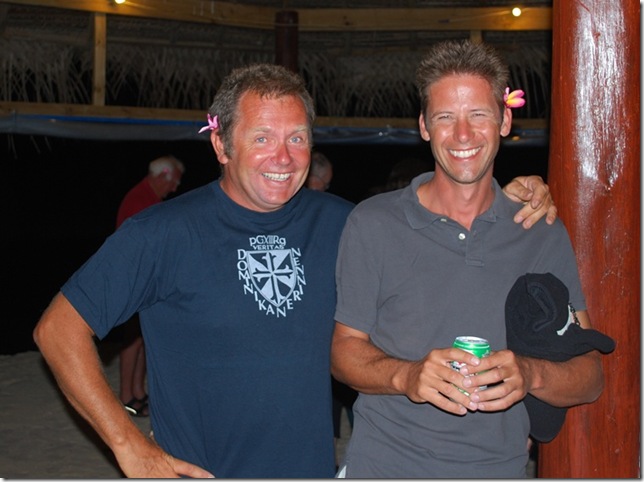 Martin (The Human Jukebox, sailor, welder, woodworker, etc.) and Wolfgang from S/V Anima III
Martin (The Human Jukebox, sailor, welder, woodworker, etc.) and Wolfgang from S/V Anima III
Tuesday was be-a-tourist day. The Aitutaki Adventures (the yellow boat for those of you headed this way) lagoon tour had received rave reviews from the other yachties, so Martin, Wolfgang, Lauren, and I gave it a shot today. It was another expectation-exceeding experience. After motoring out through a channel that was built by the Survivor TV show when they filmed here (we seem to be following these guys around the Pacific) we came to a deep part of the lagoon where we drifted for a few minutes to try to spot sea turtles, and did see a couple, although they were a fair distance from the boat. Next it was off to a beautiful motu for some snorkeling. There was the typical collection of tropical fish, but we also saw some eels, a couple of new tropical fish, and giant clams, which seem to be a unique feature here. The largest clam was at least 3 feet across, but it moved to close just like a normal-sized clam when you got too close to it. The food on the excursion was pretty impressive. After a snack of delicious fresh fruits (papaya, guava, banana, and passion fruit), we had lunch at One Foot Island. Lunch was really not what we were expecting. It was like a potluck dinner – beets, cole slaw, potato salad, two types of green salad, sweet potatoes, a papaya dish, rice, tuna, sausage, and at least a couple of other things I’m forgetting. The variety was a big change from what we’re used to, and everything was really, really good. The motus themselves were the most beautiful we’ve seen, with lots of soft white sand giving way to crystal clear water at the shore and then different shades of turquoise and blue in the deeper parts of the lagoon. Some of the motus also had areas of black volcanic rock that made a beautiful contrast with the white sand and clear water.
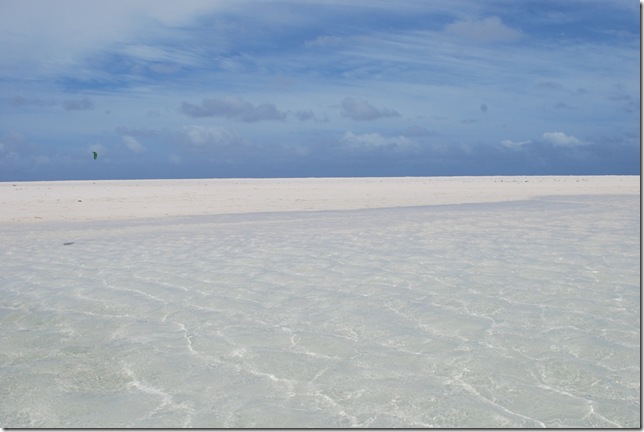 Clear water at Honeymoon Island
Clear water at Honeymoon Island
While we were snorkeling, Martin was busy taking aerial pictures of Honeymoon Island with a kite camera that he got as a gift before leaving Austria. Thanks to Martin for these pics. His website, www.anima3.net, has an English section he’s proud of.
After a short time to rest, we were off to the Samadi hotel/restaurant at the northeast tip of the island for a dinner buffet and local traditional dance show. Depending on your perspective, I was either in need of or several weeks overdue for a shave, and this seemed like a good occasion. Apparently it had been a while, because Wolfgang thought I looked like a different person and one of the locals talked with me for a couple of minutes before realizing we’d met a couple of days ago. In addition to Martin and Wolfgang, seven Brazilians from the three Brazilian boats here joined us, so we had nearly a full table of “yachties” as we’re called here. The spread of food was even bigger and more impressive than lunch and again everything was great.
After dinner the entertainment started. They started by asking for anyone who was on a honeymoon, birthday, anniversary, etc. and since Lauren and I are in the fifth month of our honeymoon and there weren’t too many people standing up, we volunteered along with a couple of the Brazilians who’d had birthdays in the last couple of days. Things started off well enough with us each getting a beautiful lei of fresh flowers, but they warned us that we would be called upon later in the evening. The Maori king of New Zealand recently made his first visit to the Cook Islands, and a traditional Maori performance group came with him, so in addition to the local show, we were also treated to a performance by the Maori group. Aitutaki is well-known across the Pacific for the quality of their dancing, and we enjoyed seeing it first-hand. The women dance with a lot of arm-swaying and hip-shaking, which is similar to dances we’ve seen before, but much of the time the men do a unique dance. It’s a bit hard to describe, but it generally involves making hand and arm gestures while their legs look like they’re doing the chicken polka at a fevered pace. The feet stay in place, but they squat a bit and move their knees back and forth very rapidly. They also do a haka dance similar to what we saw in Ua Pou but a bit less aggressive. The music behind them included percussion from a variety of drums and wooden percussion instruments that were also played at a fast pace during most of the dances. During the slower dances, a guitar, ukulele and vocals would join in.
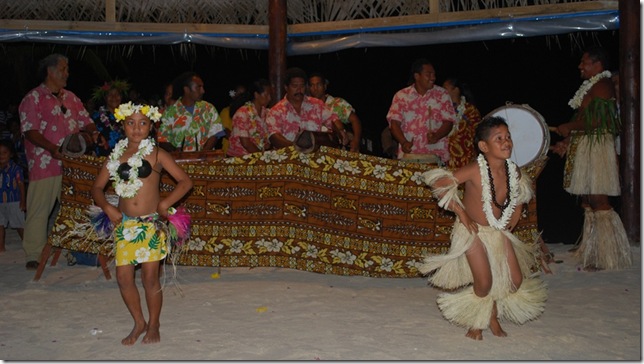 Aitutaki kids got things started
Aitutaki kids got things started
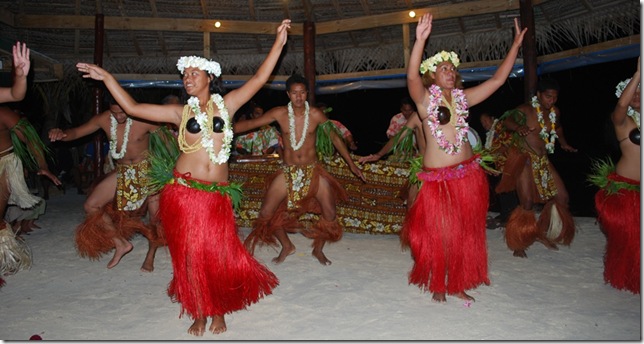 The Aitutaki dancers in action
The Aitutaki dancers in action
The Maori group was almost 20 people and they sang as if they were all hand-picked for their singing ability. Their dances weren’t quite as traditional and they seemed a bit more like a first-world trained performance group, but they were impressive. They featured plenty of the expression that was historically recorded where the eyes are made large and rolled so that there’s a lot of white showing while the tongue is stuck out almost down to the chin and accompanied by yells and fierce gestures. It was meant to intimidate back in the day and it’s certainly attention-getting.
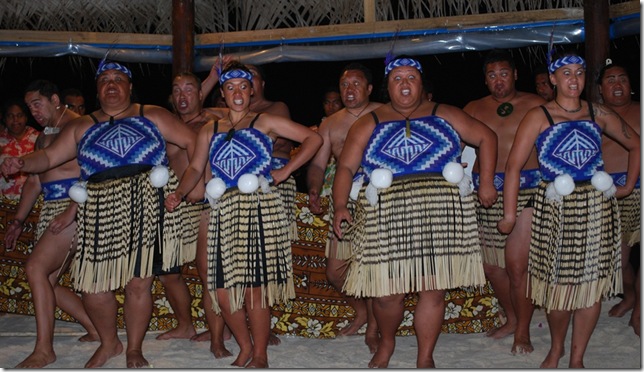 Expressive singing and chanting by the Maori group
Expressive singing and chanting by the Maori group
After the show, all the people with leis got to put on a dance show for the guests by dancing two at a time with a couple of the Aitutaki dancers, which provided plenty of laughs from everyone. The sight of us trying to do the local dances was guaranteed amusement for everybody involved.
The night was finished off by another song session on Anima that somehow lasted until 4 am, when even Martin and Wolfgang had to throw in the towel.
Needless to say, today started a bit slowly, but if the weather looks good, we’re hoping to wrap things up here and set out for Beveridge Reef and Niue tomorrow.


